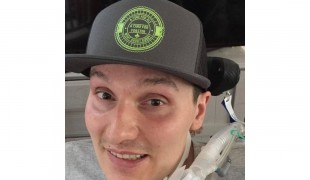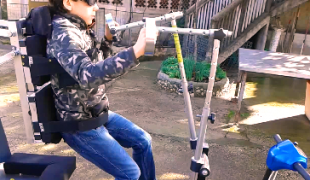- 8258
- 569
- 10
- 8
- 0
- Help Ukraine
About the solution
Using metal, boards and wheels, Roger invented a structure that adapts to the wheelchair, and helps Wout to be at the same height as his friends.
The grandfather developed a mobile structure adapted to accommodate Wout’s seat, at a total cost of about 70€.
Adapted from: http://bit.ly/2ptyZXx
This solution shall not include mention to the use of drugs, chemicals or biologicals (including food); invasive devices; offensive, commercial or inherently dangerous content. This solution was not medically validated. Proceed with caution! If you have any doubts, please consult with a health professional.
DISCLAIMER: This story was written by someone who is not the author of the solution, therefore please be advised that, although it was written with the utmost respect for the innovation and the innovator, there can be some incorrect statements. If you find any errors please contact the patient Innovation team via info@patient-innovation.com
-
-
693
-
0
-
10346

Boys create chair for disabled friend
MOVING IN A WHEELCHAIR: Moving using a wheelchair.
Studying
Cerebral Palsy
Neuromuscular Disorders
Muscular Dystrophy
Spinal Cord and Nerve Root Disorders
Walking Aid (wheelchair/walker/crutches)
Assistive Daily Life Device (to help ADL)
Muscle cramps or spasms
Difficulty coordinating movements
Stiffness or rigidity (difficulty moving)
Paralysis of the legs and lower body
Muscle weakness
Restoring mobility
Managing Neurological Disorders
Promoting inclusivity and social integration
Caregiving Support
Medical Genetics
Neurology
Orthopedics
Belgium
-
-
-
239
-
0
-
3434

Patient creates way to put on his pants more easily
(SELF)-CARE: DRESSING: Dressing independently.
MOVING IN A WHEELCHAIR: Moving using a wheelchair.
Amyotrophic Lateral Sclerosis
Body-Worn solutions (Clothing, accessories, shoes, sensors...)
Assistive Daily Life Device (to help ADL)
Managing Neurological Disorders
Caregiving Support
General and Family Medicine
Medical Genetics
Neurology
United States
-
-
-
600
-
3
-
8585

I'VE PATENTED A MACHINERY THAT ALLOWS TO PHYSYCALLY IMPAIRED TO WALK :)
WALKING WITH A WALKING AID: Walking with a walking aid
WALKING: Walking
MOVING IN A WHEELCHAIR: Moving using a wheelchair.
Muscular Dystrophy
Muscle Tone Abnormalities
Brain Injury (Abscess, Brain Barrier Defect, Brain Contusion, Brain Hemorrhage, Brain Edema)
Neuromuscular Disorders
Cerebral Palsy
Walking Aid (wheelchair/walker/crutches)
Assistive Daily Life Device (to help ADL)
Difficulty coordinating movements
Stiffness or rigidity (difficulty moving)
Paralysis of the legs and lower body
Muscle weakness
Restoring mobility
Managing Neurological Disorders
Preventing (Vaccination, Protection, Falls, Research/Mapping)
General and Family Medicine
Medical Genetics
Neurology
Orthopedics
Pediatrics
Italy
-
 en
en